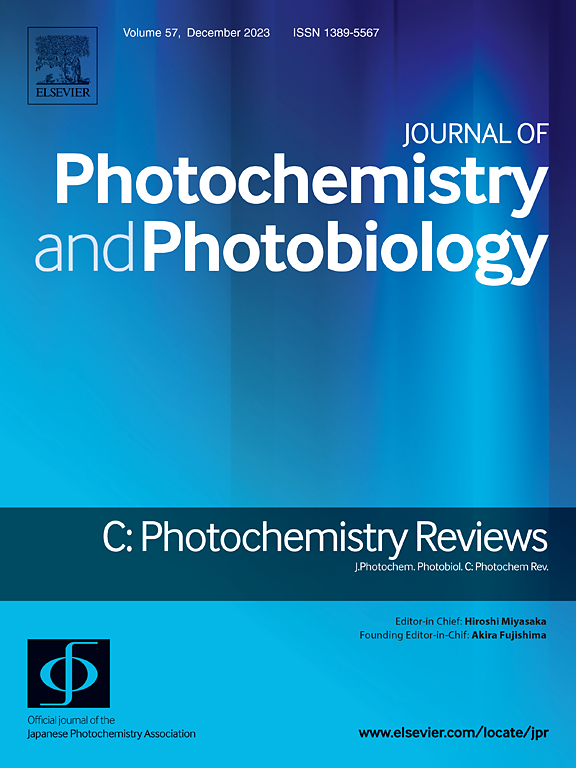低副作用光疗使用聚集诱导发射剂与“打开”和“关闭”策略
IF 13.1
1区 化学
Q1 CHEMISTRY, PHYSICAL
Journal of Photochemistry and Photobiology C: Photochemistry Reviews
Pub Date : 2025-09-25
DOI:10.1016/j.jphotochemrev.2025.100723
引用次数: 0
摘要
光动力疗法(PDT)由于其选择性消除癌细胞的能力,在现代肿瘤学中是一种领先的方法。传统光敏剂的亲水性往往导致其在生物环境中聚集,降低了处理效率。具有聚集诱导发射(AIE)特性的ps可以保证ps在聚集状态下保持甚至增强其效能。然而,AIE PSs在健康细胞中的非特异性积累,特别是在肿瘤附近的细胞中,以及PDT治疗后AIE PSs的残留,对PDT的安全性提出了显著的挑战。为了提高受这两种因素影响的PDT的安全性,研究人员通过癌症特异性生物标志物开发了可激活的AIE PSs,以及可降解的AIE PSs。本文综述了近年来癌症生物标志物激活型AIE PSs和可降解型AIE PSs的研究进展。打开AIE ps的策略主要基于光诱导电子转移(PET)、Förster共振能量转移(FRET)、系统间交叉以及增强氧的可及性来控制其激活。关闭AIE PSs的策略分别基于自降解和内源性ROS降解。本文章由计算机程序翻译,如有差异,请以英文原文为准。
Low-side-effect phototherapy using aggregation-induced emission agents with “turn-on” and “turn-off” strategies
Photodynamic therapy (PDT) is a leading approach in modern oncology due to its ability to selectively eliminate cancer cells. The hydrophilic nature of traditional photosensitizers (PSs) often leads to aggregation in the biological environment reducing treatment efficiency. The PSs with aggregation-induced emission (AIE) characteristics ensure PSs retain or even enhance their efficacy in aggregated states. However, the non-specific accumulation of AIE PSs in healthy cells, especially in those near tumors, as well as the residual presence of AIE PSs after PDT treatment, presents notable challenges to the safety of PDT. To enhance the safety of PDT impacted by these two factors, researchers have developed activatable turn-on AIE PSs by cancer-specific biomarkers, as well as degradable turn-off AIE PSs. This review summarizes the recent advancements in cancer biomarkers-activated turn-on AIE PSs and degradable turn-off AIE PSs. The strategies of turn-on AIE PSs are mainly based on the mechanisms of photoinduced electron transfer (PET), Förster resonance energy transfer (FRET), intersystem crossing, and enhancing the accessibility of oxygen that controls their activation. The strategies of turn-off AIE PSs are based on self-degradation and endogenous ROS degradation, respectively.
求助全文
通过发布文献求助,成功后即可免费获取论文全文。
去求助
来源期刊
CiteScore
21.90
自引率
0.70%
发文量
36
审稿时长
47 days
期刊介绍:
The Journal of Photochemistry and Photobiology C: Photochemistry Reviews, published by Elsevier, is the official journal of the Japanese Photochemistry Association. It serves as a platform for scientists across various fields of photochemistry to communicate and collaborate, aiming to foster new interdisciplinary research areas. The journal covers a wide scope, including fundamental molecular photochemistry, organic and inorganic photochemistry, photoelectrochemistry, photocatalysis, solar energy conversion, photobiology, and more. It provides a forum for discussing advancements and promoting collaboration in the field of photochemistry.

 求助内容:
求助内容: 应助结果提醒方式:
应助结果提醒方式:


